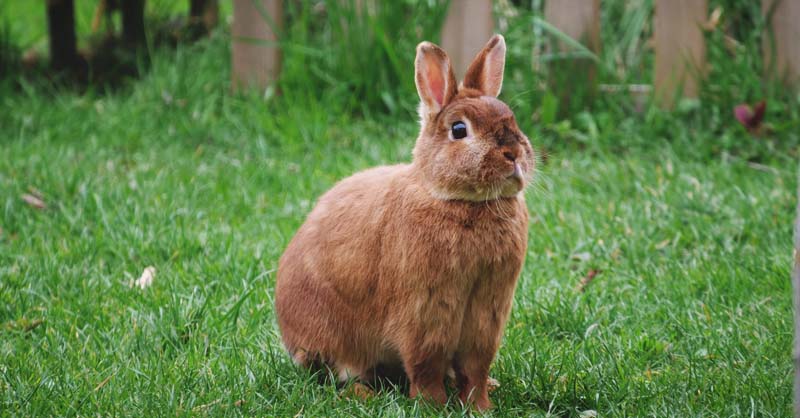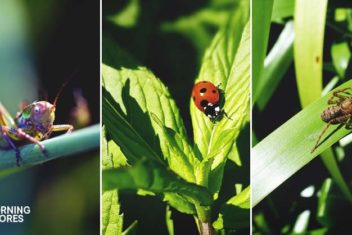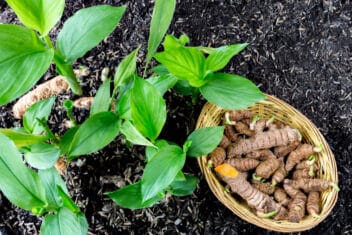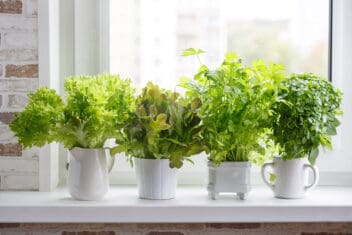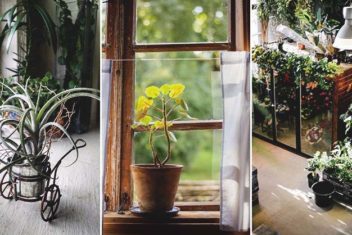Bunnies are cute, but don’t let those adorable wiggly noses and soft ears distract you. Left to their devices, those sweet rabbits will eat your entire vegetable garden. That’s why knowing which rabbit repellent to choose for your garden is essential.
Remember Peter Rabbit, that classic children’s book character? That story was based on Peter snatching carrots from Mr. McGregor’s garden. That fictional tale has roots in reality – rabbits are voracious eaters, and they’ll compete with you for your plants.
Luckily, there are many humane ways to keep rabbits out of your garden and encourage them to stay in their own space. I am going to fill you in on the best ways to keep Peter where he belongs so you can have your veggies to yourself.
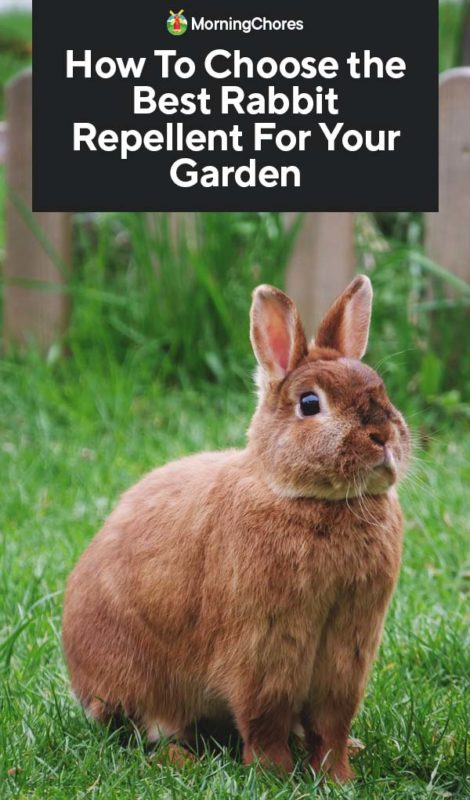
All About Rabbits
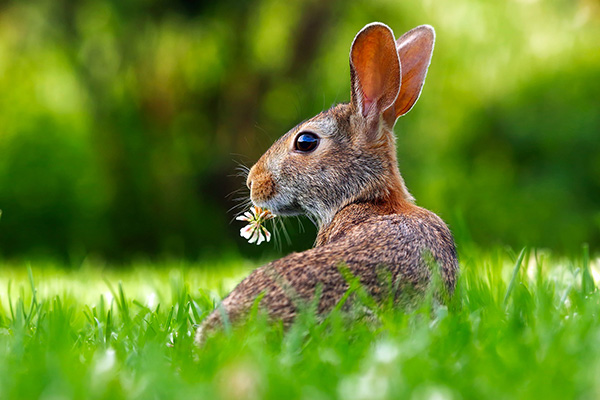
There are 15 types of rabbits and hares in the United States in pretty much every habitat imaginable, from open fields and icy tundras, to the veggie patch in your backyard.
Rabbits are vegetarians and love green, leafy plants. That includes herbs, lettuces, young brassica plants such as broccoli and collards, as well as peas and beans. They also enjoy flowers and can wreak havoc on prized ornamentals and fruit trees.
Rabbits are nibblers. They take a bite on one plant, hop a few steps, and take a bit of another plant. If you have one rabbit in your yard that may not seem like a lot of damage. The problem is that rabbits come in groups, and as you may have heard, they reproduce rapidly. If you have one rabbit in your garden, you’ll likely have a lot more.
Think Like a Rabbit
Rabbits are prey animals, which means they will run first and ask questions later. Consequently, they move quickly to a hiding place when startled. Rabbits look for areas that offer cover and hiding places like tall grass, brush piles, and rock walls.
Wild rabbits often make their nests in what we think is an unusual place, such as the middle of your yard. They do this because they believe your yard is a safe place from predators.
The first step to deter rabbits from nesting (and making more rabbits) is to keep your garden areas neat and tidy. Grass around garden areas should be kept mowed to discourage hiding places. You can also remove brush piles and stacks of stones to eliminate places for them to hide.
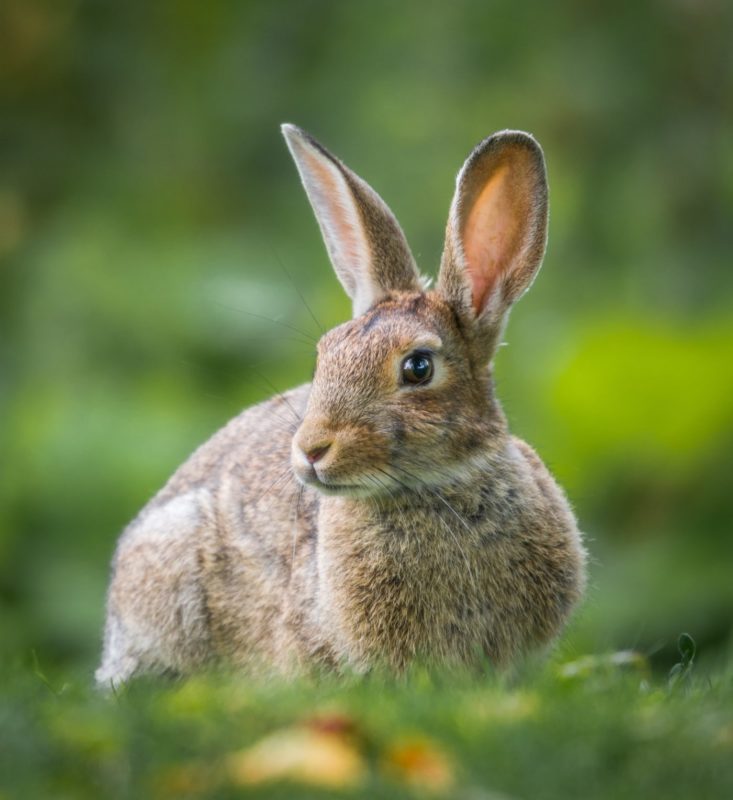
Physical Barriers
Exclusion is the best humane method for protecting your garden from rabbits. Barriers like fencing allow rabbits to move about your property without harming your plants.
Fencing
Fencing for rabbits needs to be at least two feet high and have two-inch or smaller hardware cloth.
The small holes are necessary because the rabbits can push through larger openings. If they can fit their skull through a hole, the rest of their body can squeeze through. Standard garden fencing has 2 x 4-inch holes which are easy for the rabbit to climb through.
Additionally, be sure not to use chicken wire. Chicken wire is only suitable for birds. Most mammals, including rabbits, can easily bite or push through the thin wire.
Note that if you’re combining rabbit and deer fencing make sure you have tight holes for bottom two feet. You can then continue the fence upward using standard garden fencing or deer netting.
Discourage Digging
Rabbits can dig, so make sure your fence reaches underground at least 6 inches. In addition, you can lay a 2-foot wide piece of fencing flat on the ground around the outside of the garden fence to discourage digging. This will also help to deter groundhogs.
Electric Fence
Electric fencing is another effective rabbit repellent. The rabbits touch the electric fence with their noses, receive a shock and retreat. Over time, rabbits learn to leave the area alone. There are two main types of electric fence – netting and strands.
Netting
Netting is woven fencing designed to be rolled out around the perimeter of the area you want to protect. Netting is convenient but takes more energy to run and is more expensive. Netting should have verticals every 3 inches so that the rabbits cannot jump through.
Strands
Electric wire strands or lines are single electric lines that are placed at specific intervals. Strands are easy to move and require less power to run. The downside is that they’re not as effective for rabbits as the electrified netting.
When using this method, plan to run three strands about six inches apart vertically. The lowest strand needs to be 3 inches from the ground.
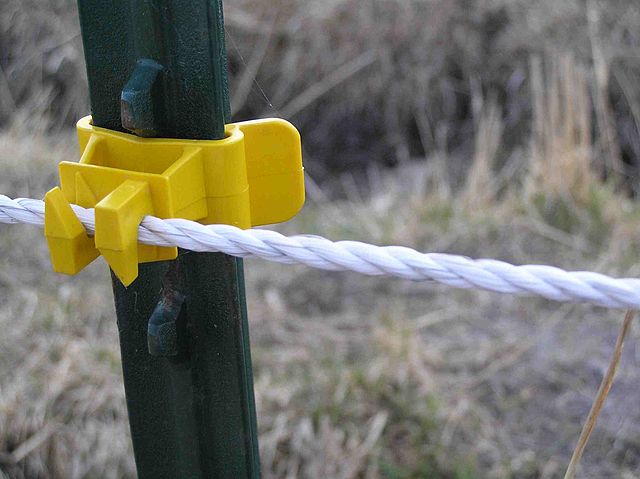
Build the fence at a 35° angle so that it tilts outwards away from the garden. This way, the rabbit’s ears touch the fence first, and it moves away.
Plants That Repel Rabbits
There are several plants out there that rabbits don’t like, and planting them around your garden is an effective rabbit repellent that can encourage bunnies to choose another place to nibble.
You can use these plants as clever companions in the garden. For instance, you can plant onions together with carrots to keep away nibblers.
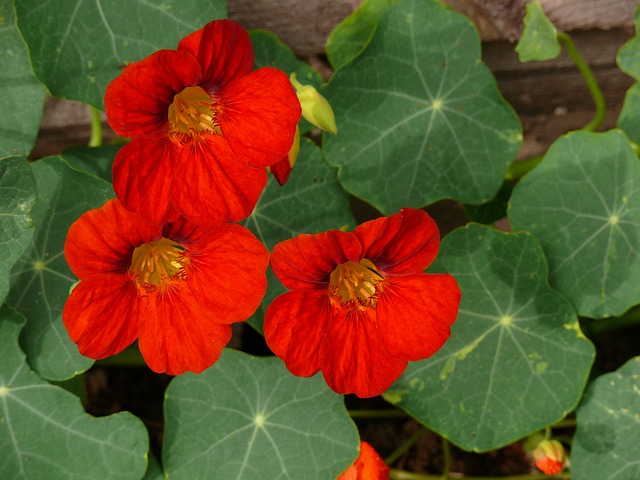
- Nasturtiums – Nasturtiums are an excellent natural repellent. Rabbits hate them. Another bonus? They’re delicious. Add naturisms to your salad for a peppery flavor. Additionally, they attract pollinators such as bees.
- Garlic – Rabbits avoid strong-smelling plants like garlic.
- Onion – Onion is another pungent plant that discourages rabbits. Plant them next to brassicas, spinach, and strawberries.
- Rhubarb –Rabbits avoid rhubarb. The oil in the leaves also keeps away some pests like aphids.
- Oregano – If rabbits are troubling your herb garden, consider planting oregano around the perimeter.
- Basil – Basil is another herb to consider if you have bunnies in your herbs. A few basil plants sprinkled throughout the garden will keep nibblers away.
- Geranium – Rabbits generally avoid geraniums, though if they are extremely hungry, they have been known to take a nibble.
Natural Rabbit Repellent

If fencing and repellent plants don’t work for you, it may be time to break out the big guns. There are both natural and chemical rabbit repellent options out there.
- Cayenne Pepper – Sprinkle cayenne pepper around the garden plants you want to protect. When rabbits come sniffing around they will get the pepper in their noses, which makes them sneeze and move away from the area. Remember that you have to add more cayenne powder to the soil every time it rains or you water.
- Blood Meal – Blood meal is a smart rabbit repellent because the critters don’t like the smell. Another advantage of sprinkling blood meal in your garden is that it’s a fertilizer. Blood meal adds nitrogen to the soil.
- Fish Emulsion – Fish emulsion, which is a popular organic fertilizer, also helps to repel rabbits.
- Man’s Best Friend – Any dog that likes to bark can scare rabbits away. Additionally, as your dog travels your yard marking their scent, they let rabbits know that it is unsafe to approach. Walk your dog along the outside of your garden to urinate to create a barrier.
Chemical Rabbit Repellent
There are many commercial repellents on the market. Some of these you spray on the leaves of your plants. These are called foliar sprays. Studies have shown that foliar sprays are most effective. The purpose of these repellents is to make the plant taste bad to the animal. Once the animal takes a bite, they get a bad taste, and they don’t want to eat from that area anymore.
Other repellents are made to spray directly on the garden soil. This is to mimic the smell of predators and make the rabbit afraid to come too close.
- Bobbex – Bobbex is a brand of eco-friendly repellents. You spray the repellent directly on your plants. Bobbex contains a sticky substance that helps it cling to your plants and less likely to wash away.
- Liquid Fence – Liquid Fence is another commercial rabbit repellent. You can spray the plants directly or spray a perimeter “fence” around the garden area. Both the scent and the taste will deter rabbits from eating plants. The company recommends alternating their different products to keep wildlife on their toes.
Protecting Specific Plants
If you have a few special plants that you need to protect, one option is to cover plants with garden fabric or shade cloth. Use hoops to hold up the fabric and then attach the material to the ground firmly so that the bunnies can not wiggle underneath.

You can also purchase fencing units such as crop cages to put around the plants you want to protect. Crop cages are usually lightweight and need to be secured. The best way to do this is to place rebar in the ground at the corners and attach the cage to the rebar.
Protecting Trees
Rabbit or mouse guards are made for young trees. These plastic bands circle the trunk but are not attached. That way, they can stretch as the tree grows.
You can also place a barrier or a small fence around each tree. Put three stakes in the ground around the tree. Attach a piece of hardware cloth. Leave at least two inches between your fence and the tree to allow for the tree to grow.
Wildlife Gardens
Finally, keep in mind that you can live harmoniously with rabbits. They can be deterred from a section of the yard, and you can encourage them to visit other areas instead.

Consider turning a ten-foot square spot in your yard into a wild rabbit garden. Plant clover, alfalfa, radishes, and carrots. The rabbits will hang out in this area for a free meal. Another bonus is that you’ll have a little wildlife garden that will delight family members young and old.
In addition, you can also add a brush pile to this area or plant some tall grasses to make hiding areas for wildlife. This will encourage them to stay in their own space.
Tying It All Together
Rabbits are a relatively easy species to manage, especially if you combine several different rabbit repellent techniques. Wild bunnies can be distracted by providing them with their own garden, and you can keep them away from your important plants by adding fencing to your garden and using repellents.
Try some of these methods and see how successful you will be at keeping rabbits away from your prize plants.

